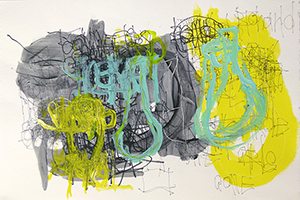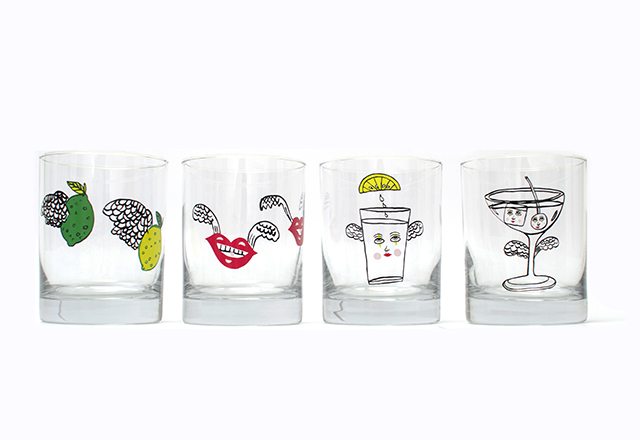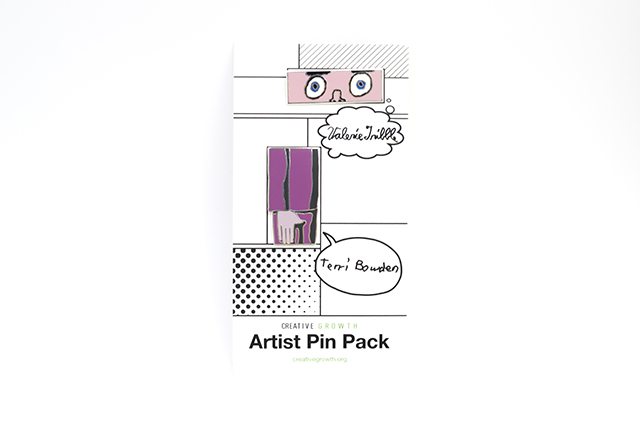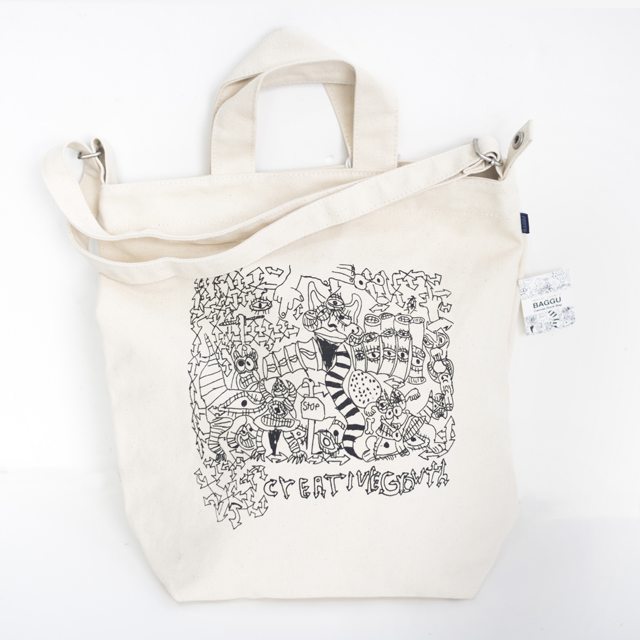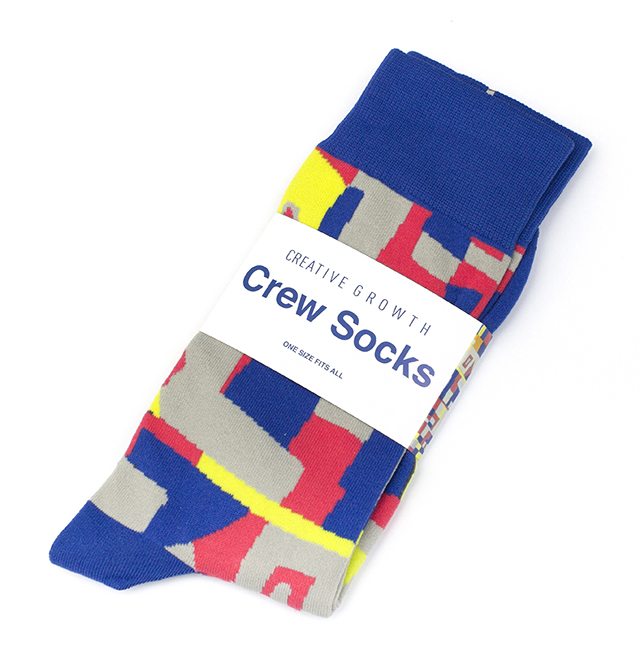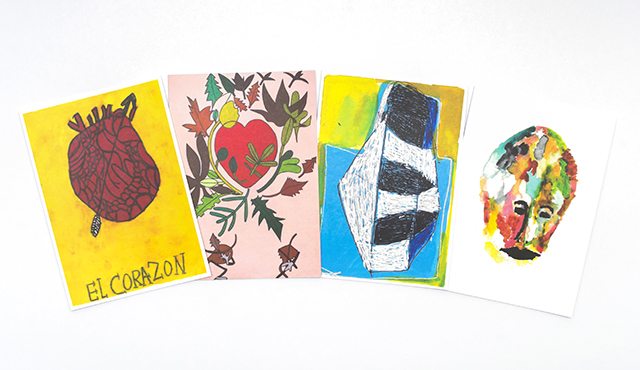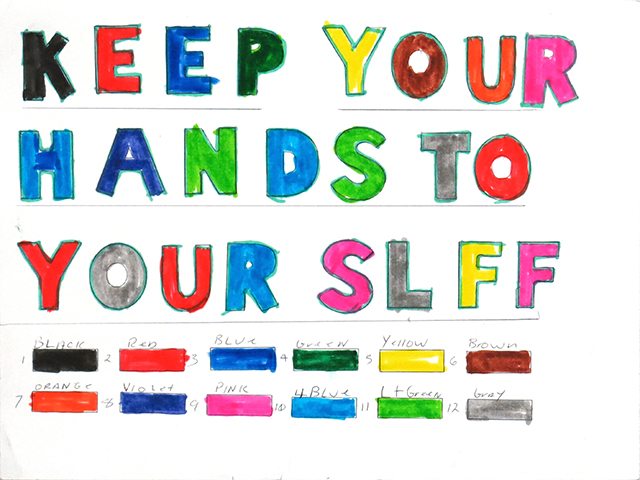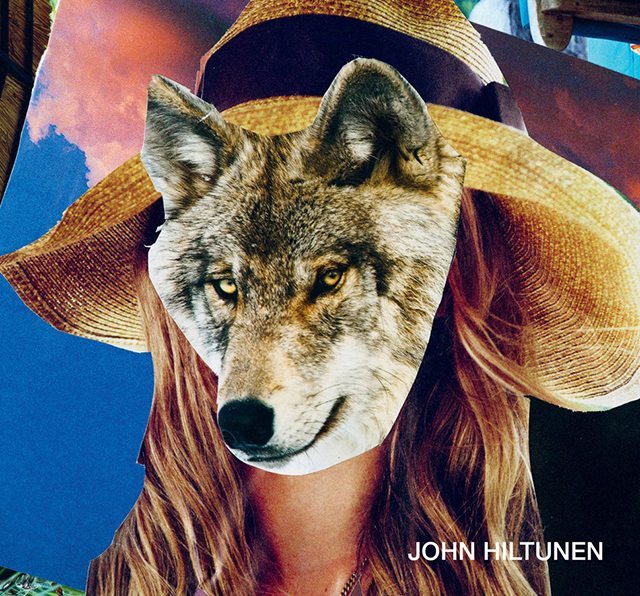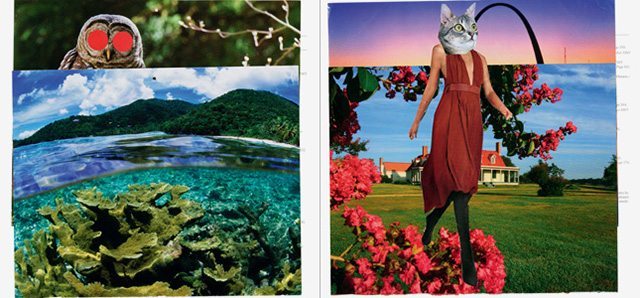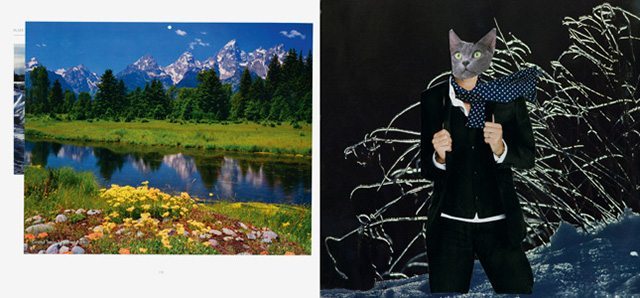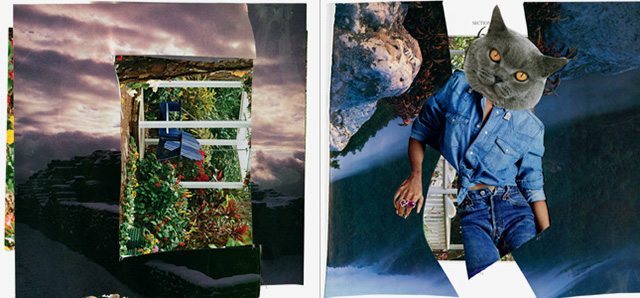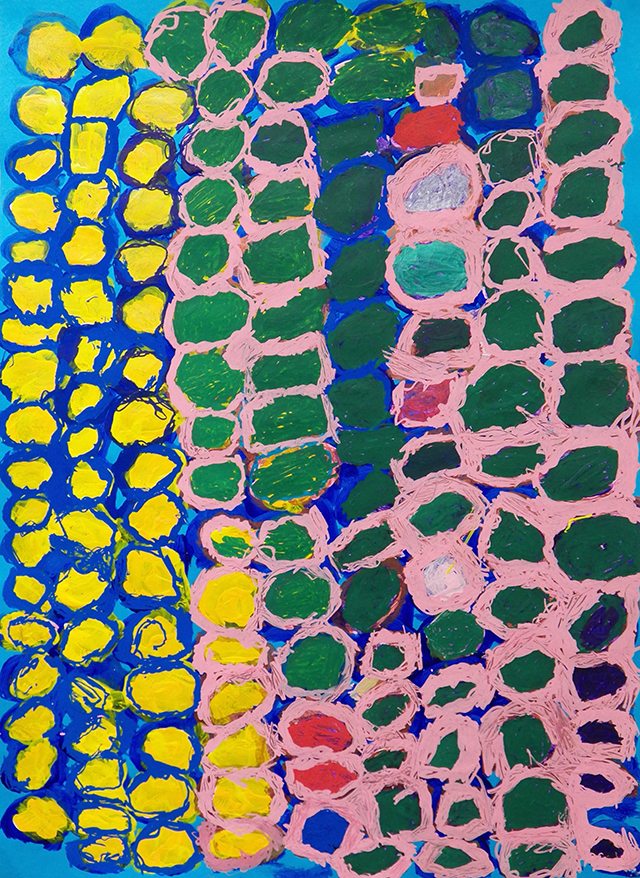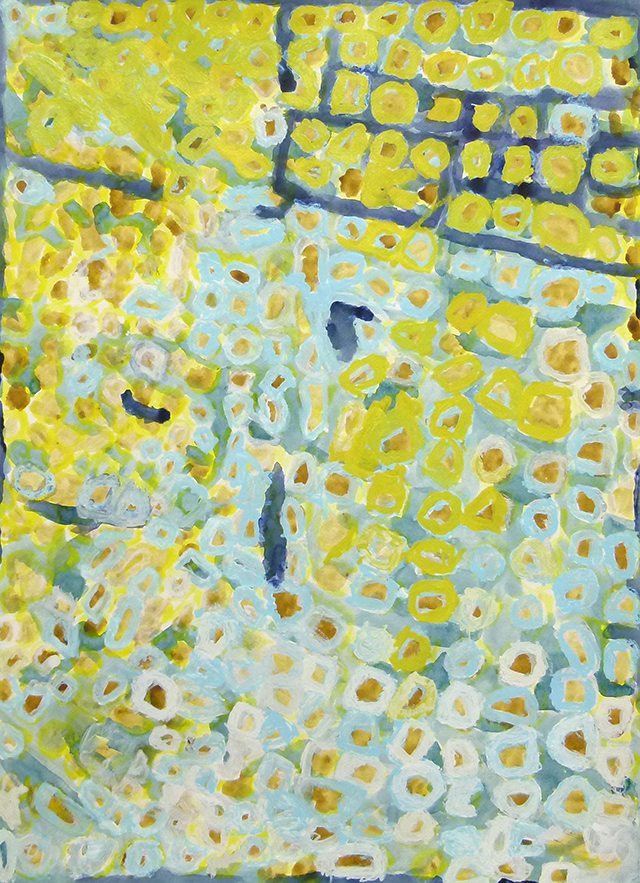A Member Artist’s Perspective
Beanie-clad Cedric Johnson, a natural salesman, leads me through the studio and around the gallery, proudly showing me his work. Born in 1952, in Corpus Christi, Texas, Johnson has been creating a wide range of art forms at the Creative Growth Art Center in Oakland since 1980. Exuberant, extroverted, highly animated Johnson, who “always knew he wanted to be an artist,” works in a wide range of artistic formats—ceramics, sculpture, painting, drawing, textile work, and woodwork—there is very little he does not attempt. When he creates, which he does five days a week, ideas “come to him through his imagination, from what he sees around him in the studio, or from pictures,” according to Jessica Daniel, Creative Growth’s marketing and community development manager. Like Scott, and many of the other artists working here, his imagination is surprising and his work is both intense and astounding.
Johnson has exhibited in group shows at Creative Growth, as well as at Rena Bransten Gallery and Gallery Paule Anglim in San Francisco. Ampersand, a Portland, Oregon, gallery that specializes in contemporary artwork, held Cedric Johnson’s first solo exhibition where he exhibited 20 artworks, including 6 ceramic pieces.
Myles Haselhorst, the curator of the exhibition, met Johnson when visiting Creative Growth for the first time. Haselhorst recounts seeing Johnson drawing a mask-like face on the pages of an old atlas. “I’ve always been drawn to masks of all kinds,” Haselhorst notes, “so I was thrilled to see that nearly every page of the atlas featured drawings that were suggestive of masks one might see in primitive cultures, but in Johnson’s distinct visual style.” Like his drawings, many of his ceramic pieces allude to masks and hang directly on the wall. “It’s remarkable,” Haselhorst continues, “how Johnson is able to translate his drawing style to his ceramic pieces, each one portraying a different character or state of mind. They are a bit larger than life, which, in addition to his bold color choices, makes for pieces that have an otherworldly quality.”
While their various disabilities lend significance to the Creative Growth artists’ creations, they, and their work, are not simply defined or limited by these disabilities. Looking at Johnson’s vibrant, glossy, Cubist-style, fantastical ceramic masks and clay whistles, and the artwork from many of the other artists working here, it becomes clear that he and his community of fellow self-taught artists are shattering stereotypes, creating works of distinction, and achieving recognition in today’s art world.

























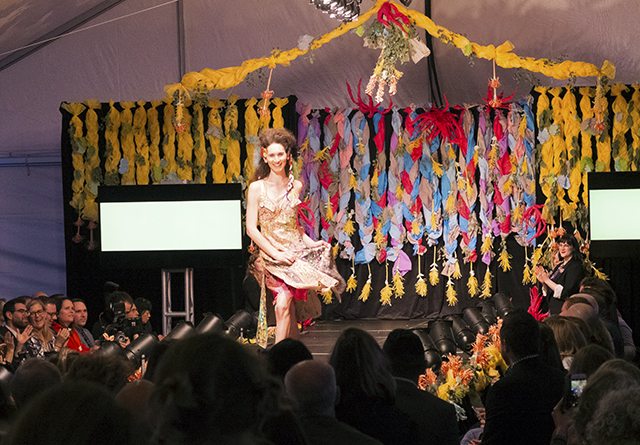





 Photographs by Justin Clifford Rhody
Photographs by Justin Clifford Rhody